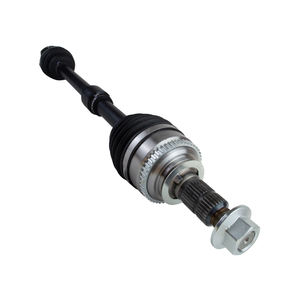PRODUCT PARAMETERS
Description
Introduction to Pin shaft with holes DIN1434 Clevis Pin With Small Head And Split Pin Hole Carbon
Pin shaft with holes DIN1434 Clevis Pin With Small Head And Split Pin Hole Carbon are important components in mechanical systems used to support rotating parts (such as gears, pulleys or sprockets) and transmit torque. They play a key role in mechanical equipment by connecting the power source with the working parts to ensure the effective transmission of power.
Characteristic advantages of Pin shaft with holes DIN1434 Clevis Pin With Small Head And Split Pin Hole Carbon
High precision: adopting precision machining technology ensures the size and shape accuracy of the shaft and improves the transmission efficiency.
High strength: made of high-quality materials with good tensile, compressive and wear-resistant properties.
Reliability: After strict quality control, it ensures stable operation for a long time.
Versatile design: A variety of specifications and types are available to suit different applications.
Easy maintenance: the structure is designed for easy installation and repair, reducing maintenance costs.

(Pin shaft with holes DIN1434 Clevis Pin With Small Head And Split Pin Hole Carbon)
Specification of Pin shaft with holes DIN1434 Clevis Pin With Small Head And Split Pin Hole Carbon
The Pin Shaft with Holes DIN1434 Clevis Pin with Little Head and Split Pin Hole Carbon is a precision-engineered bolt developed for protected links in mechanical settings up. Made from high-quality carbon steel, this clevis pin combines longevity with high tensile stamina, making it ideal for durable applications. Certified with the DIN1434 standard, it makes certain harmony in measurements and compatibility with other DIN-specified components. The pin includes a compact, inconspicuous little head on one end and a transverse opening near the contrary end to suit a split pin (cotter pin), making sure a locked, tamper-resistant link. Key requirements consist of a smooth, cylindrical shank for specific alignment in clevis joints, linkages, or pivoting systems. The carbon steel building is normally heat-treated or surface-treated (e.g., zinc-plated or black oxide) to boost rust resistance and put on toughness. Criterion diameters vary from 2 mm to 20 mm, with sizes ranging 12 mm and 200 mm to suit varied applications. The split pin hole is precision-drilled perpendicular to the shaft axis, with a size tailored to match basic split pins (e.g., 1.5 mm to 4 mm). The small head is built to a minimized dimension, minimizing outcropping in restricted areas while offering ample bearing surface. Applications consist of agricultural machinery, auto suspensions, construction devices, and commercial machinery where trusted rotating or securing is required. The DIN1434 layout guarantees interchangeability and load-bearing uniformity, with a shear stamina and exhaustion resistance tested to satisfy commercial safety and security standards. Setup entails inserting the pin with aligned bores in linked parts, after that safeguarding it with a split pin with the transverse opening to avoid accidental dislodgment. This clevis pin is excellent for atmospheres requiring vibration resistance, ease of maintenance, and duplicated assembly/disassembly. Keep in mind: Split pins are typically sold individually. Always validate measurements (diameter, size, opening dimension) against DIN1434 tables for compatibility.

(Pin shaft with holes DIN1434 Clevis Pin With Small Head And Split Pin Hole Carbon)
Applications of Pin shaft with holes DIN1434 Clevis Pin With Small Head And Split Pin Hole Carbon
The DIN1434 Clevis Pin with Small Head and Split Pin Opening, produced from carbon steel, is a versatile bolt made for secure expression in mechanical systems. Its essential functions include a portable head, a transverse hole for a split pin, and compliance with DIN1434 requirements, guaranteeing precise dimensions, material honesty, and compatibility. Carbon steel building and construction provides high tensile toughness and longevity, making it perfect for sturdy applications. The split pin opening allows insertion of a wedge pin, preventing disengagement under vibration or vibrant tons. Common applications cover multiple industries. In farming, these pins connect affiliations in tractors and farmers, allowing pivot points for rakes or tillers. Automotive systems utilize them in suspension components and control arms, where reliable articulation is vital. Construction tools relies upon DIN1434 clevis pins for excavator booms, loader arms, and crane joints, taking care of high stress and anxiety and constant activity. Industrial machinery uses them in conveyor belt systems, hydraulic cyndrical tubes, and production line pivots, where safe and secure, recyclable attachment is vital. Marine and transport fields benefit from their use in tail systems, trailer hitches, and railway combinings, commonly with corrosion-resistant coatings. The split pin layout boosts security in safety-critical applications like lifts or lifting tools, avoiding unintended launch. Ease of setup and maintenance lowers downtime, as the pin can be promptly gotten rid of or replaced with fundamental devices. Carbon steel’s wear resistance makes sure long life in unpleasant settings, while conformity with racket requirements guarantees uniformity for global supply chains. This clevis pin equilibriums stamina, dependability, and cost-effectiveness, functioning as an essential component in machinery needing robust, articulated connections. Its adaptability across markets emphasizes its role as a trusted option for designers focusing on security, sturdiness, and efficiency in dynamic mechanical systems.
Company Introduction
Established in 2002, Port of Machinery Co.,ltd. focus on metal research and mining machinery spare parts. 2 factories over an area of 13,300 square meters, based on 100+ sets of equipment, our production capacity reaches 12000 Tons/Year. has passed ISO 9001 quality managment system certification in 2008.
Our mainly products are dragline excavator spare parts,rotary kiln spare parts, large modulus gear (gear shaft), gearbox ect. 40+ patents with over 45 years experience to help focus on improve the service life of spare parts. We belive that more than 80% reason of mechanical parts’ working life depends on hot processing (steel making/forging/casting/welding/heat treatment). Eight material engineers will control the quality from the original resource.
If you are interested, please feel free to contact us.
Payment
L/C, T/T, Western Union, Paypal, Credit Card etc.
Shipment
By sea, by air, by express, as customers request.
5 FAQs of Pin shaft with holes DIN1434 Clevis Pin With Small Head And Split Pin Hole Carbon
What is a DIN1434 clevis pin with a small head and split pin hole? The DIN1434 standard specifies a clevis pin with a small, rounded head and a transverse hole near the base for inserting a split pin (cotter pin). It is designed for secure pivoting connections in mechanical systems, such as linkages, hydraulic cylinders, or suspension components. The small head minimizes space requirements, while the split pin hole ensures the pin stays locked in place, preventing accidental dislodgement.
What applications is this clevis pin suitable for? This pin is commonly used in machinery, automotive systems, construction equipment, and industrial assemblies where a reliable, removable pivot joint is needed. It pairs with a clevis fork and shackle, secured by a split pin through the hole. Typical examples include control arms, lever connections, and hydraulic rod ends, especially in environments requiring vibration resistance and easy maintenance.
Why is carbon steel used for this pin? Carbon steel offers high tensile strength, durability, and wear resistance, making it ideal for handling heavy loads and mechanical stress. The material can be heat-treated or coated (e.g., zinc-plated) to enhance corrosion resistance. This ensures longevity in demanding applications while maintaining cost-effectiveness compared to stainless steel or alloy variants.
How do I install a DIN1434 clevis pin? Insert the pin through aligned holes in the clevis fork and shackle. Once positioned, pass a split pin through the transverse hole at the base of the clevis pin. Bend the split pin’s legs outward to lock it in place. Ensure the split pin is snug but not over-tightened to allow smooth pivoting without play.
What distinguishes DIN1434 from other clevis pins? DIN1434 pins are standardized under German engineering norms, ensuring precise dimensions (e.g., head size, hole placement) for compatibility with split pins and clevis components. Unlike some variants, they feature a compact head design and a pre-drilled hole for split pins, eliminating the need for additional locking mechanisms. This makes them ideal for standardized assemblies requiring reliability and interchangeability.

(Pin shaft with holes DIN1434 Clevis Pin With Small Head And Split Pin Hole Carbon)
REQUEST A QUOTE
RELATED PRODUCTS
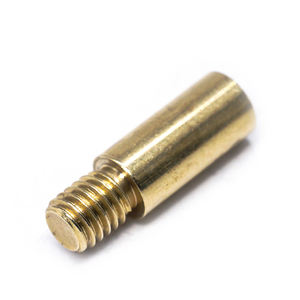
OEM custom CNC turning bearing shaft High precision stainless steel rotary shaft long linear steel shaft
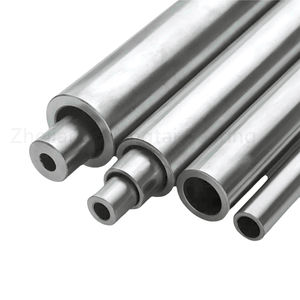
Customized Large Cnc Machining Forging Steel High Quality Big Spline Gear Shaft
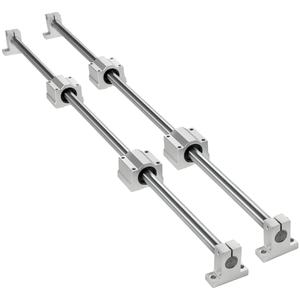
Non-standard Customization Stainless Iron/stainless Steel Rotating shaft For Juicer
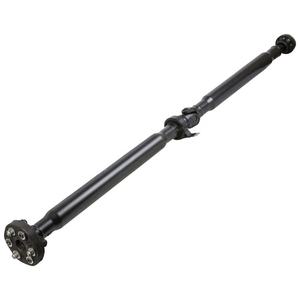
Lower Steering Column Shaft Fits 48080-ED50A 48080-EM00A 2007- For Nissan Tiida
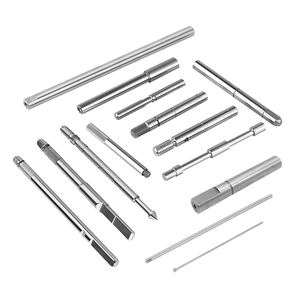
7L0 521 101 H Driveshaft Prop Shaft Fit For VW Touareg Porsche Cayenne Drive Shaft 7L0521101H
